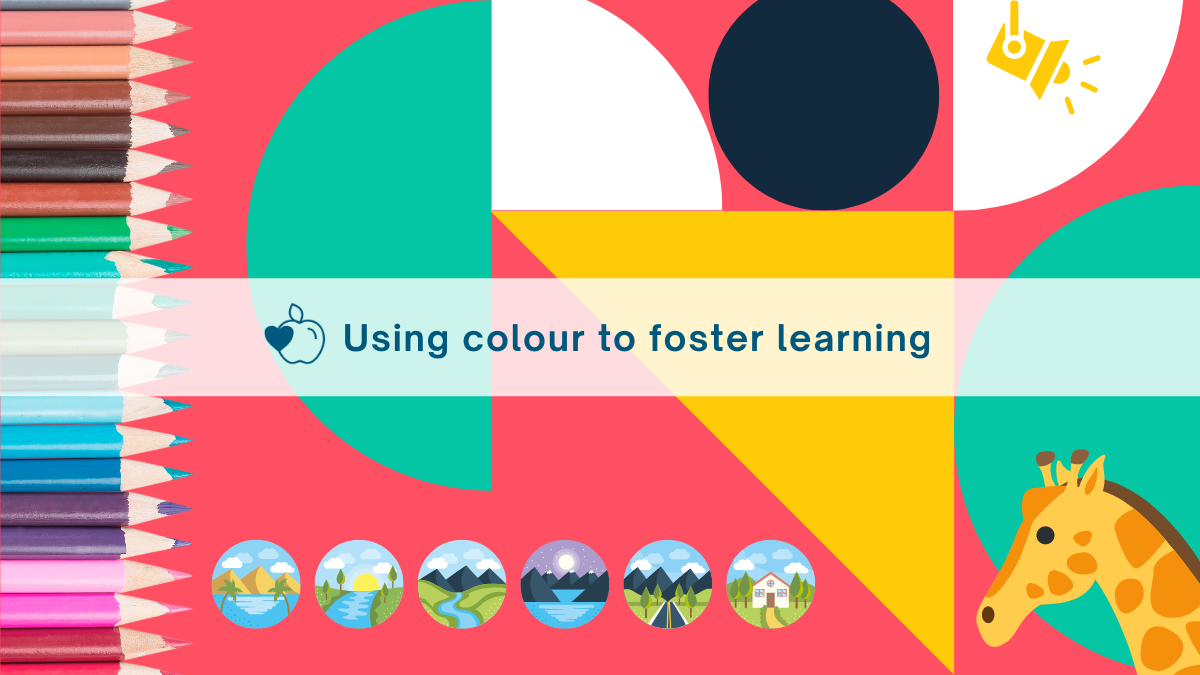Using colour to foster learning

As Joseph Addison said, ‘colour speaks all languages’. I truly believe that colour is a language on its own. Why should learning be dull and boring paragraphs, with lines and lines of sentences? My mission is to speak a colourful language full of pictures that draw children’s attention.
Working in the ECD sector (creche and aftercare for primary school students), I soon discovered that children hate homework, dread exam time, and that absolutely no incentive can make them study. I also realised that there were only a few children who actually knew how to study.
Through trial and error, I started making summaries for my daughter, in colour. I incorporated games and summarised her work in mind maps, bullet points, keywords, and acronyms. From there, she grew a love and understanding of her work.
I started my small business on Facebook and then came across the Teacha! resource marketplace, where I was given the opportunity to open my online store. What did I have to lose? I loaded some of my summaries and worksheets, and never once looked back!
Here are a few key concepts I use when developing my products:
1. Try a combination of colours
Colour certainly plays a key role in creating an environment that fosters learning. I use colour to direct attention to keywords, phrases, and even pictures. Using the correct combination of colours grabs the attention immediately, stimulating the visual senses and helping students remember facts and figures.
Using the Orange River as an example, to summarise and enable children to remember it I would put a picture of a river with an orange slime splash or an orange slice next to it.

2. Include pictures
I’m a very visual person and would prefer a picture over a lot of words to read. To summarise paragraphs, I take out keywords, list them in a graph or mind map, and add a picture describing the sentence or key points to remember.
For example, in Geography you need to know that the earth is round. I would then place a picture of a round ball or maybe a circle next to a picture of the earth. When trying to recall a fact about the earth, children might remember the ball next to the earth globe, which then triggers their memory that the earth is round like a ball.

3. Simplify with mind maps
Studying text-heavy pieces might seem daunting to children but once you break down information into smaller chunks, it becomes more manageable and easier to remember. Mind maps and graphs most definitely help with making complex statements easier to understand.
I would simplify the sentence ‘Nelson Mandela was born on 18 July 1918 in Mvezo and became president in 1994 after being in prison for more than 27 years’ by drawing a spiderweb, as follows:

4. Make learning fun
Who wouldn’t rather play than study? Well, why not play whilst studying – especially in groups. One example of how I incorporate games into studying is by making flashcards of keywords. With only the picture in front, I show it to the children and then award points to the one who can give a description first. Achieving points, knowing your work when recognizing a picture, and a sense of accomplishment encourage self-confidence and inspires them to study.
Instilling a love of learning in children
Here are some tips I use:
- Always make sure children have colour pens/pencils and paper! If they have the supplies, let them use them when drawing and creating summaries.
- Underline keywords and try to draw a picture to help them to remember. Ask them ‘how will you remember it?’. I use names, dates, and familiar things around us and link them to the work my daughter has to learn to help her remember it a bit better.
- Spend some time with them and help with that first mind map, using colour and creating games for them to remember what they need to know.
- Help them to create flashcards with something in front that triggers their memory of the concept they need to learn and add the answer at the back.
- Distinguish between major and minor details, and delete minor details to make their workload and learning material more manageable.
My Teacha! collection contains English and Afrikaans summaries that I’ve created using these tried and tested tips. I love what I do every day, knowing that somewhere, someone is using my summaries and enjoying studying a little bit more (and giving mom and dad a little bit less grey hair!).
About the author:
After being in the corporate industry for 17 years working in a compliance environment, Anelia Muller took the plunge and joined her family business to spend some more time with her family, husband, and daughter. Working in the ECD sector, she discovered that not many children know how to study. She created summaries for her daughter that included colour, games, and mind maps and started selling them on Facebook and her store on Teacha!.



 KES(KSh)
KES(KSh) USD($)
USD($) GBP(£)
GBP(£) GHS(₵)
GHS(₵) NGN(₦)
NGN(₦) MUR(₨)
MUR(₨) BWP(P)
BWP(P) AUD($)
AUD($) TZS(Sh)
TZS(Sh) INR(₹)
INR(₹) PHP(₱)
PHP(₱) AED(د.إ)
AED(د.إ)

